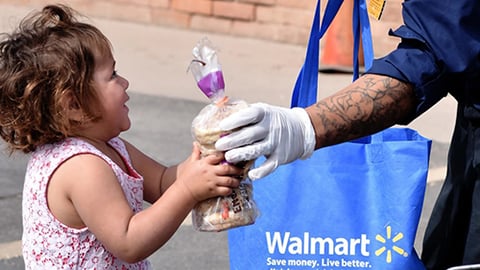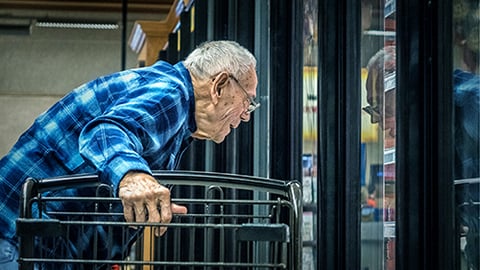COVID-19 Shows the Promise of Retail Health
The novel coronavirus, COVID-19, is changing much of how we live today and it could well change how we access healthcare in the future. On Friday March 13, President Donald Trump delivered an update on how the nation is stepping up efforts to test for the virus.
He was flanked by leaders in the retail industry, the CEOs of the largest retail chains in the US: CVS, Target, Walgreens and Walmart. It was a telling moment as retail brands stepped up to the podium to literally and figuratively assert their own leadership in fighting this pandemic.
The update included news that these stores will create drive-through testing in parking lots once the tests are more widely available. These company stocks got a bump before the market closed that day, but that near-term gain will likely be overshadowed by the long-term boost retail health operations could get.
When Walmart unveiled its first Walmart Health Center, it got a fair amount of attention in the business press but was viewed largely as a retail initiative along the lines of in-store clinics and insurance partnerships.
Make no mistake, while this is still a pilot, it is no small program.
The two stores near Atlanta were profiled in late February. Located in Calhoun, GA, a small town of 16,000 just north of Atlanta, this is a typical Walmart supercenter in all ways but one – customers can receive medical and dental attention in ways that extend well beyond urgent care centers and in-store clinics more commonly found at retail outlets.
Routine medical checkups cost $30, teeth cleanings $25 and counseling is $1 a minute. Prices are clearly posted and do not fluctuate based on insurance. In fact, many are less expensive than existing copays, meaning even the uninsured may opt to pay upfront. Facilities are open seven days a week and both appointments and walk-ins are welcome. On-site pharmacies will be filling prescriptions.
Walmart’s initiative is unique, but joins programs from other retailers including CVS’ Health Hubs. Amazon, too, has set its sights on health as a growth vehicle starting with Amazon Care, a pilot program for employees in the Seattle area with in-person and virtual physician visits. This announcement was quickly followed by the acquisition of Health Navigator, a startup intended to help grow this primary care initiative.
The Role of Technology
Earlier this year, I detailed the five disruptors emerging in health and wellness. At the time, I would have needed a crystal ball to forecast the emergence of this pandemic, but the underlying concepts still hold true.
One of those key disruptors is “technology as the problem and the answer.” Look no further than the emphasis on telehealth in this crisis. As we are asked to create social distance, to isolate ourselves from others for the sake of public health, technology stands to create a lifeline, particularly for two key demographics: The elderly population most vulnerable to the virus and the youngest among us who are likely to remain outwardly healthy while spreading the virus in their communities.
Nearly half of 18-to-29 year-olds don’t have a primary care provider they can turn to, and research suggests that millennials prefer telehealth platforms and walk-in clinics to more traditional care options. Making telehealth and retail clinics available in a health crisis can go a long way toward speeding care and slowing the spread of COVID-19.
When this crisis has passed, the US health landscape could look quite different. New initiatives are being given room to test and expand far more quickly than they would have otherwise in the hopes they will benefit public health and improve outcomes. The public, often slow to embrace change, may well open their minds and change healthcare consumption patterns in the face of this health crisis.
Retail is moving things forward because they see the need. It was an initiative before the Coronavirus and is far more relevant today. I’m a student of human behavior – it comes with a career spent in media with a focus on health. Our responsibility is to communicate with content that is relevant at key points along the healthcare journey. And I am encouraged to see that retail is leading the way in understanding the needs and behaviors of society, as it relates to how they want to engage with the healthcare system at such a critical point in time.
We’re creating change that has been needed for a long time and that human behavior will be forever impacted by this event, hopefully to the positive. We will all be different after COVID-19 retreats and the healthcare landscape likely will be, too.
This article was originally published by Progressive Grocer's sister brand Retail Leader.







